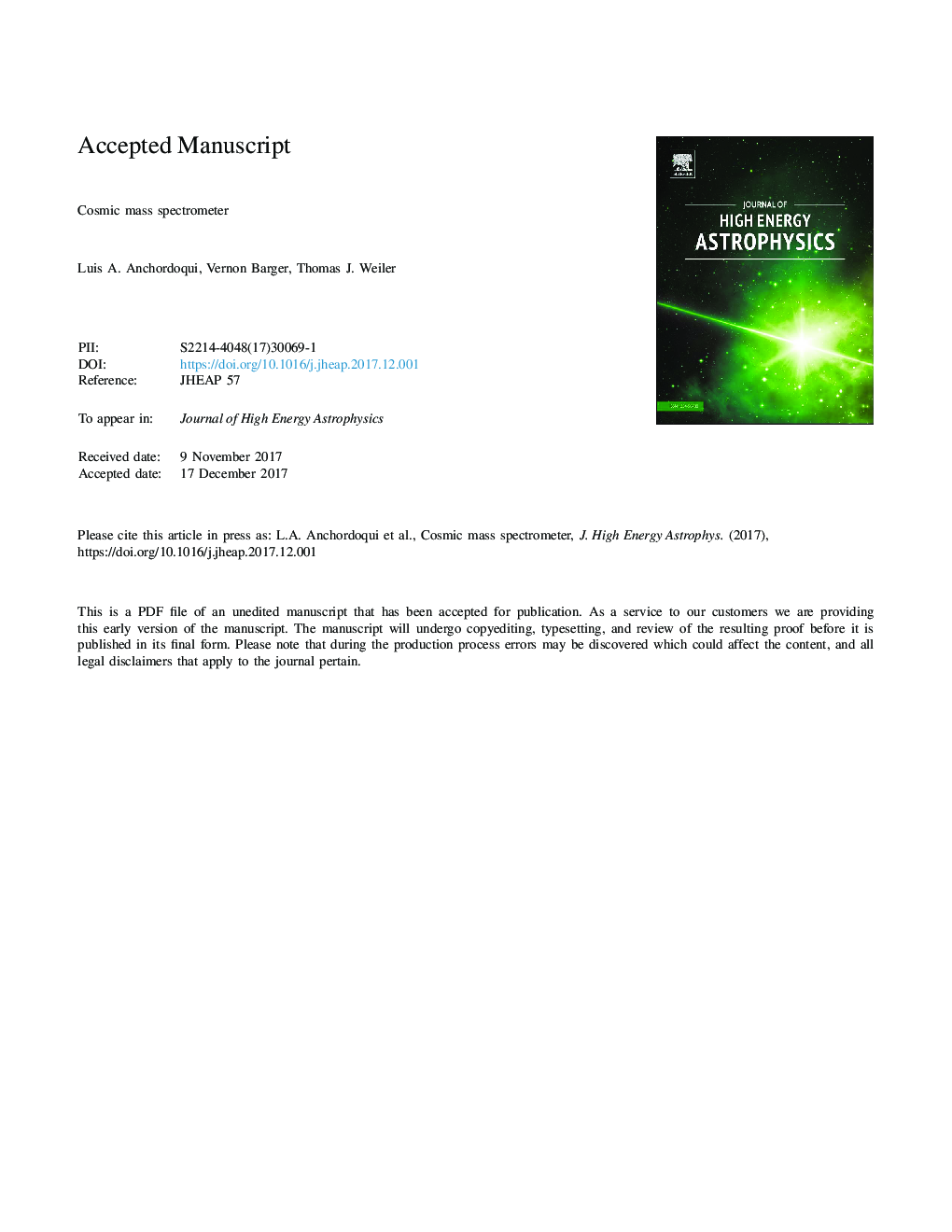| Article ID | Journal | Published Year | Pages | File Type |
|---|---|---|---|---|
| 8141159 | Journal of High Energy Astrophysics | 2018 | 16 Pages |
Abstract
We argue that if ultrahigh-energy (Eâ³1010GeV) cosmic rays are heavy nuclei (as indicated by existing data), then the pointing of cosmic rays to their nearest extragalactic sources is expected for 1010.6â²E/GeVâ²1011. This is because for a nucleus of charge Ze and baryon number A, the bending of the cosmic ray decreases as Z/E with rising energy, so that pointing to nearby sources becomes possible in this particular energy range. In addition, the maximum energy of acceleration capability of the sources grows linearly in Z, while the energy loss per distance traveled decreases with increasing A. Each of these two points tend to favor heavy nuclei at the highest energies. The traditional bi-dimensional analyses, which simultaneously reproduce Auger data on the spectrum and nuclear composition, may not be capable of incorporating the relative importance of all these phenomena. In this paper we propose a multi-dimensional reconstruction of the individual emission spectra (in E, direction, and cross-correlation with nearby putative sources) to study the hypothesis that primaries are heavy nuclei subject to GZK photo-disintegration, and to determine the nature of the extragalactic sources. More specifically, we propose to combine information on nuclear composition and arrival direction to associate a potential clustering of events with a 3-dimensional position in the sky. Actually, both the source distance and maximum emission energy can be obtained through a multi-parameter likelihood analysis to accommodate the observed nuclear composition of each individual event in the cluster. We show that one can track the level of GZK interactions on an statistical basis by comparing the maximum energy at the source of each cluster. We also show that nucleus-emitting-sources exhibit a cepa stratis structure on Earth which could be pealed off by future space-missions, such as POEMMA. Finally, we demonstrate that metal-rich starburst galaxies are highly-plausible candidate sources, and we use them as an explicit example of our proposed multi-dimensional analysis.
Related Topics
Physical Sciences and Engineering
Physics and Astronomy
Astronomy and Astrophysics
Authors
Luis A. Anchordoqui, Vernon Barger, Thomas J. Weiler,
